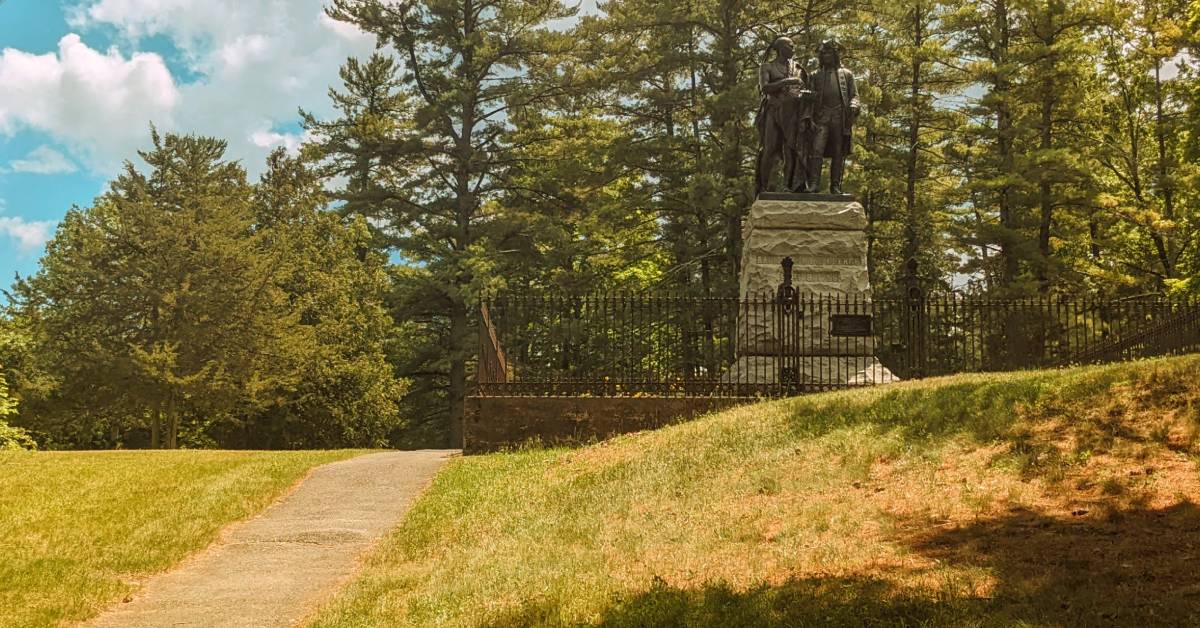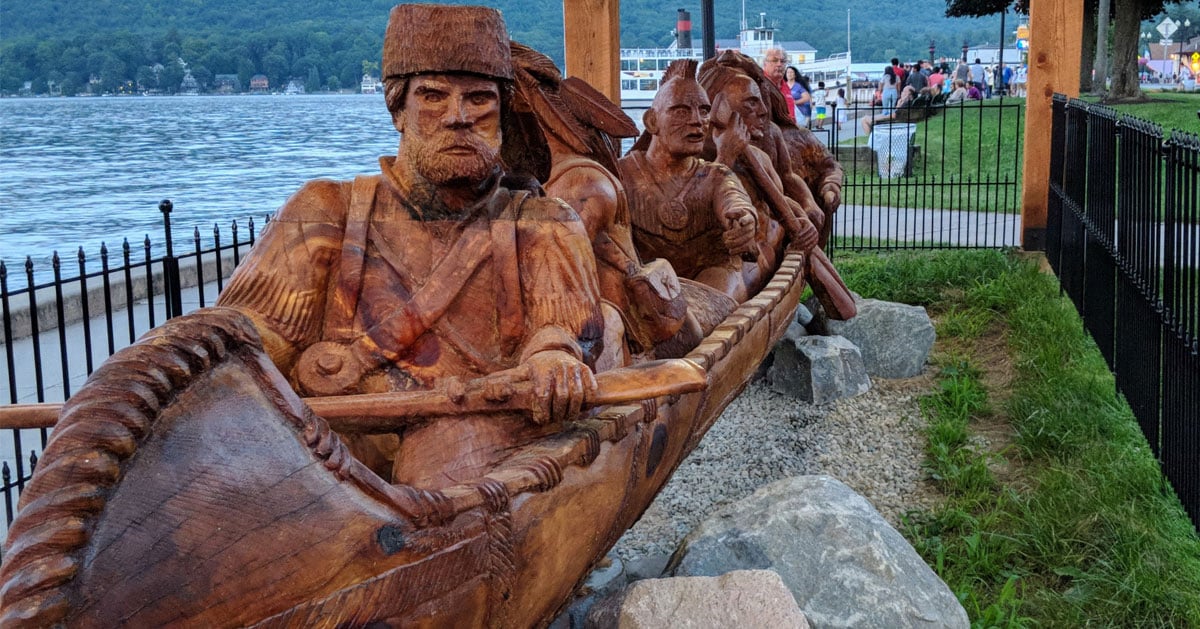Self-Guided Colonial Wars Historical Walking Tour in Lake George
Looking for a historical walking tour in Lake George? The Self-Guided Colonial Wars Historical Walking Tour takes you on a journey of the pivotal role Lake George played during the early years of this country!
Read the background information below, or jump to details on each stop of the walking tour.
Jump to: Setting the Stage For War | Important Dates & Conflicts | Details On The Tour | Each Stop On the Walking Tour

Lake George: A Battleground, Highway & Historic Hotspot
For thousands of years, Native Americans thrived along Lake George, long before it became a hotbed of colonial conflict. The lake’s strategic location made it a key travel and trade route - control the lake, and you controlled the region.
The Iroquois and Algonquin fiercely vied for dominance here, and in 1609, French explorer Samuel de Champlain, allied with the Algonquin, defeated the Iroquois in a key battle that set the stage for centuries of alliances and warfare.
Though the early colonial wars - like King William’s and Queen Anne’s - saw little action in the Lake George area, things changed dramatically by the mid-1700s. As tensions rose over French forts out west, the British sent in troops. General William Johnson’s victory at the Battle of Lake George marked the start of intense fighting in the French and Indian War.
Later, the lake saw action again during the American Revolution, as patriots clashed with British forces. From ancient home to native peoples to blood-soaked battleground and busy commercial waterway, Lake George has seen it all.
Important Historical Dates & Conflicts Involving Lake George
- September 8, 1755 - The Battle of Lake George was fought at the south end of the lake. This was a great British victory over the French and their Native American allies.
- March 1757 - The French crossed ice-covered Lake George and attacked Fort William Henry. However, the French retreated after they were unable to seize the fort.
- August 1757 - The French again attacked Fort William Henry and the entrenched camp in what is now Lake George Battlefield Park. This time the British surrendered and the French burned the fort before departing.
- July 1758 - 15,000 British and provincials left the south end of Lake George and attacked French-held Fort Carillon (Ticonderoga) on Lake Champlain. There the British were defeated.
- 1759 - The British under General Jeffery Amherst pushed beyond Lake George to Lake Champlain. The British seized Fort Carillon, renamed it Fort Ticonderoga, and then occupied Fort St. Frederic (Crown Point). During this campaign, Fort George in the Lake George Battlefield Park was constructed.
- 1763 - The Treaty of Paris ended the French & Indian War with the British victorious.
- The American Revolution - Lake George was the scene of warfare with the Battle at Diamond Island in 1777, and several military actions at Fort George including Carleton's Raid in 1780. Also, located here was the smallpox hospital for the American army in 1776.
What to Expect From the Walking Tour & Each Stop

The Colonial Wars in Lake George Walking Tour is 3.3 miles long and takes approximately two hours to complete. Because this is self-guided tour, you can opt to begin at any point along the loop, you can visit each stop over the course of a few days, and you can even use a vehicle if you prefer.
Please maintain the integrity of the historical and natural sites. Restrooms are located along the route.
Below, find links to further information on each stop:
1) The Old Courthouse
2) Artillery Cove
3) Montcalm's Camp
4) Sunken Fleet
5) Montcalm's Entrenchments
6) Warship Row and the Mayor Robert M. Blais Walkway and Park
7) Lake George Steamboat Company and Steel Pier
8) Military Dock
9) Radeau Warship
10) Battle of Lake George: September 8, 1755
11) Fort George Ruins
12) Entrenched Camp 1757
13) Native American Historic Statue
14) Unknown Soldiers Historic Monument
15) Stockaded Fort 1759
16) Knox Cannon
17) Smallpox Hospital 1776
18) Battlefield Park Visitor Interpretive Center
19) Father Jogues
20) Fort William Henry
21) Fort William Henry Cemetery and Memorial
Posting on this site is with the permission of the Lake George Battlefield Park (Fort George) Alliance.
